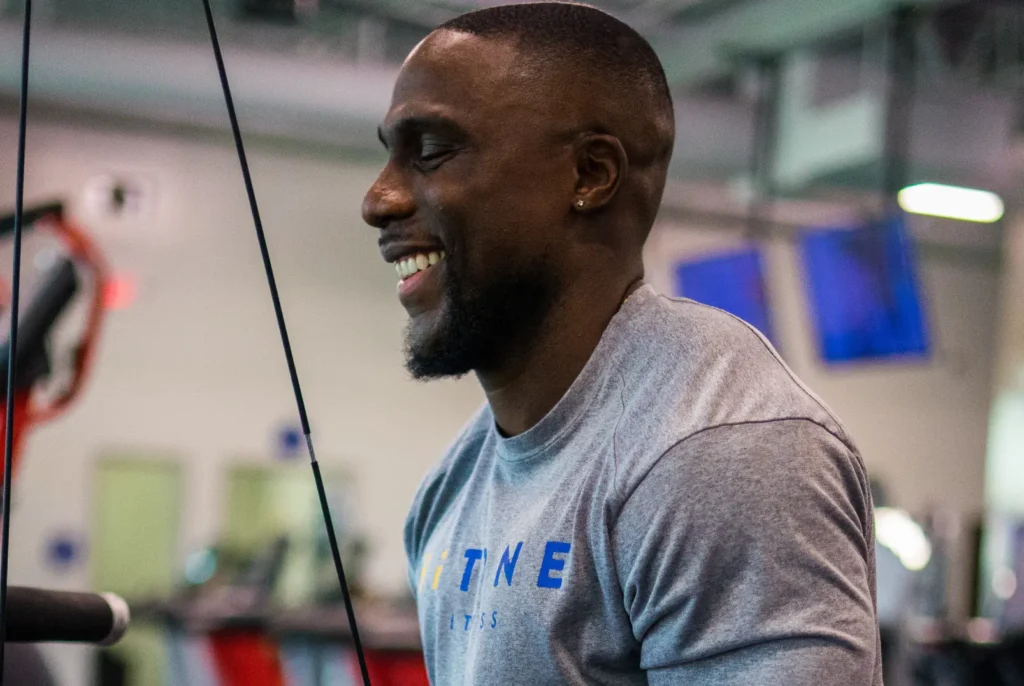As we age, it’s no secret that our bodies naturally tend to lose some of their elasticity. But hey, that doesn’t mean we should just accept it and let it be. Flexibility is a crucial aspect of fitness, especially for seniors. It’s the secret sauce that keeps us moving, grooving, and doing the things we love.
Firstly, improved flexibility leads to enhanced mobility. This means being able to keep up with your grandkids in the park, easily reach that top shelf in your kitchen, or gracefully get in and out of your car without any discomfort.
Secondly, being flexible reduces the risk of falls. Falls are the leading cause of injury in seniors, and they can seriously impact our quality of life. By improving flexibility, we’re also improving balance and coordination, making us less likely to take a tumble.
And lastly, flexibility exercises can significantly boost our overall quality of life. Because better flexibility can lead to less pain, improved posture, and even a more positive outlook on life. The benefits are truly endless!
Preparing for flexibility exercises
Alright, before we dive into the exercises, let’s lay some groundwork. Safety first, right? Here are some essential tips and precautions to keep in mind before you start your flexibility journey.
- Consult your healthcare provider: This is the first and most crucial step. Before starting any new exercise regimen, it’s always wise to consult with your healthcare provider. They can give you personalized advice based on your health history, current condition, and fitness level. After all, we’re all unique, and what works for one person may not work for another.
- Listen to your body: This one’s important. If you feel any discomfort or pain during an exercise, stop immediately. Pushing through the pain isn’t a badge of honor – it’s a ticket to injury town. Remember, the goal here is to improve your flexibility, not to win an Olympic gold medal.
- Start slow: Rome wasn’t built in a day, and neither is flexibility. Start with lighter exercises and gradually increase the intensity as your body becomes more accustomed to the movements. Patience and consistency are key.
- Warm-up: Warming up your body before any exercise is crucial. A good warm-up increases your body temperature, prepares your muscles for the workout, and significantly reduces the risk of injury. A brisk five-minute walk or some gentle bodyweight movements should do the trick.
Daily flexibility exercises for seniors
Here are four simple yet effective flexibility exercises that you can easily incorporate into your daily routine, but if you are looking for more tailored routines, then get connected with our personal trainers.
Exercise 1: Neck stretches
Let’s start at the top, shall we? Neck stretches are an excellent way to relieve tension and improve flexibility.
Step-by-step guide
- Sit comfortably in a chair with your feet flat on the ground.
- Slowly tilt your head towards your right shoulder until you feel a gentle stretch on the left side of your neck.
- Hold this position for about 10-15 seconds.
- Return your head to the neutral position and repeat the stretch on the other side.
Benefits for seniors
Neck stretches are great for seniors as they can help alleviate neck stiffness and pain, which are quite common as we age. Plus, they can also improve your range of motion, making it easier for you to check your blind spots while driving.
Exercise 2: Shoulder and arm stretches
Next, let’s give some love to our shoulders and arms.
Step-by-step guide
- Stand or sit upright.
- Extend one arm out in front of you at shoulder height.
- Using your other hand, gently pull the extended arm towards your chest until you feel a stretch in your shoulder.
- Hold for 10-15 seconds, then switch arms.
How these stretches help with everyday activities
These stretches are especially beneficial for activities that involve reaching, lifting, or pushing. Think about grabbing that jar from the top shelf or pushing a shopping cart – all these become easier with flexible shoulders and arms.
Exercise 3: Torso twists
Now, let’s move on to our core with some torso twists.
Step-by-step guide
- Sit upright in a chair with your feet flat on the floor.
- Keep your hips stationary and gently twist your upper body to one side.
- Hold this position for 10-15 seconds, then repeat on the other side.
Importance for core flexibility and balance
Torso twists are fantastic for improving core flexibility, which is crucial for maintaining balance. A strong and flexible core can help prevent falls, improve posture, and even alleviate lower back pain.
Exercise 4: Leg and ankle stretches
Last but certainly not least, let’s focus on our legs and ankles.
Step-by-step guide
- Sit securely towards the edge of a chair.
- Extend one leg out in front of you, keeping the other foot flat on the floor.
- Point your toes towards the ceiling and then down towards the floor, gently stretching your calf muscles and ankle.
- Repeat this motion 10 times, then switch legs.
Contribution to walking and balance stability
Stretching the legs and ankles is essential for maintaining stability while walking and standing. These stretches can help prevent leg cramps, improve circulation, and even enhance your walking speed.
Final thoughts
Embracing daily flexibility exercises is not just about adding a few stretches to your routine; it’s about enhancing your life as a senior. Whether it’s keeping up with energetic grandkids, maintaining independence in daily tasks, or just feeling better in your daily movements, the benefits of improved flexibility touch all aspects of life.
Remember, consistency is key, and with regular practice, you’ll likely notice improvements not only in your physical capabilities but also in your overall well-being. So, take it slow, listen to your body, and enjoy the journey towards a more flexible, vibrant you. Embrace these exercises as your daily companions, and look forward to the numerous, life-enhancing benefits they bring.





